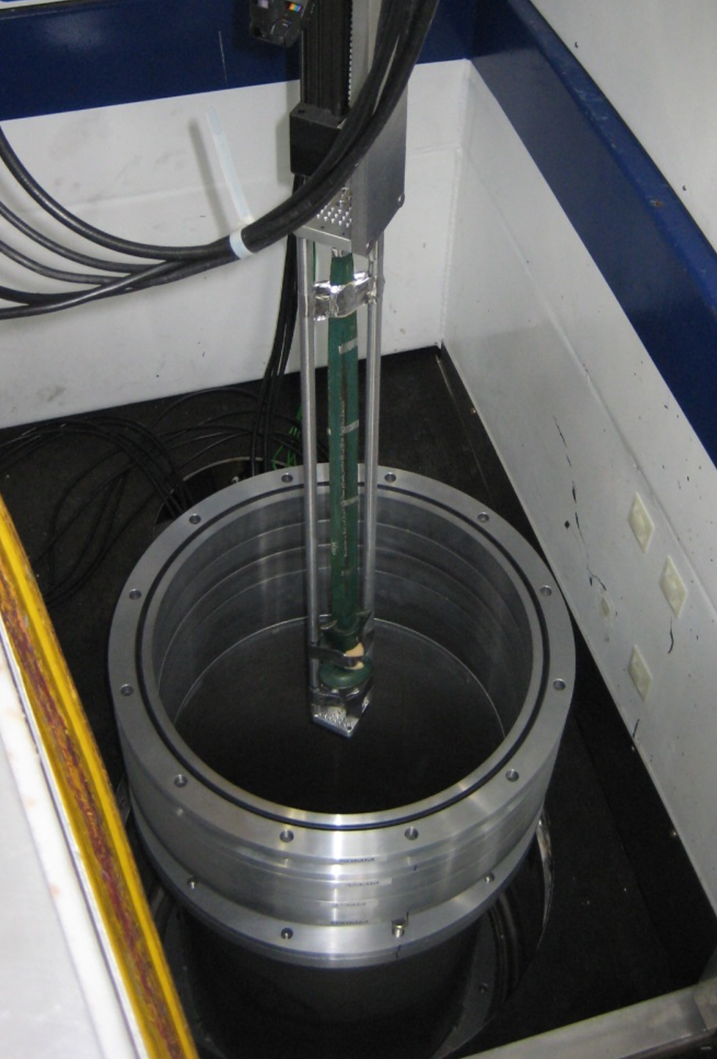For years, archaeologists have struggled to fully differentiate between swords forged with different offensive styles of attack in mind.
In order to learn more about these precious artefacts, one must take samples, which can be a very challenging procedure when you are dealing with an incredibly fragile, 3000 year old specimen that is the only one of its kind in the world. Traditional, destructive sampling techniques have thus restricted experiments to a bare minimum and only permitted analysis in special, one-off cases.
Nowadays, thanks to some phenomenal physics, scientists can provide definite answers to age-old questions regarding the origin of such symbols of Bronze Age craftsmanship and they can do so in a non-invasive manner.
The team from Université Bordeaux Montaigne and Uffington Heritage Watch, analysed 10 swords sent from archaeological sites dotted around Europe, including ones in Austria, Italy and Slovenia. Despite knowing a lot about their structure and manufacturing process, archaeologists had yet to confirm the exact use of these swords and nature of their design. Were they crafted with the intent of being used as stabbing or slashing weapons?
To find answers, the team sent the swords to the ISIS Neutron and Muon Source, based at the Harwell Science and Innovation Campus in Oxfordshire, UK. Under the trusted guidance of instrument scientist, Dr Winfried Kockelmann, the swords were scanned using neutrons in cross-sections in order to analyse edge hardening along the length of the sword blade.
Traditionally, cut-and-thrust swords can be identified by a massive midrib, parallel edges, and a rather short, massive cross-section of the edge. More recent slashing swords, on the other hand, display broader and significantly thinner cross-sections, with a flat, wide midrib, and a leaf-shaped blade (Figure 1). Of the ten sword sample they received from Vienna's Natural History Museum, the group selected two swords in particular for in depth neutron analysis, both of which were featured in the Journal of Archaeological Science.
Bronze Age Swords first appeared on the scene back in 17th century BC. Before that, most edged cutting tools and weapons were made from stone like flint or obsidian. The only problem with stone is that it is too brittle to be forged into long, thin contraptions that could be used to attack enemies. With the discovery of the much more malleable bronze came the invention of the bronze sword, a weapon designed to slay and kill. Testament to the power of such a weapon, the Bronze Age sword in all its varieties remained a weapon of choice for almost 2000 years until its replacement with iron at the dawn of the Iron Age.
The first sword - discovered in the river Danube before 1933 - belonged to the Achtkant-type swords, dating back to c. 1400 BCE. The second sword found more than a century beforehand in Lorch, Upper Austria, was a Riegsee-type sword made in c. 1325-1225 BCE.

Figure 1: Two swords studied using neutron diffraction at ISIS Neutron and Muon Source. Both swords were taken from the Natural History Museum in Vienna. Sword above: Archäologiemuseum Schloss Eggenberg, Universalmuseum Joanneum, inv.no. 16.910; photo: M.Mödlinger. Sword below: Naturhistorisches Museum Wien, inv. no. 74.475; photo: M. Mödlinger. Images Courtesy of Natural History Museum Vienna.
By analysing the diffraction patterns obtained from GEM (a general materials diffractometer) at ISIS Neutron and Muon Source, the team were able to determine the structure variations, phase compositions and crystallographic textures on the two bronze swords at various points. Each sword was mounted onto an aluminium frame and lowered into a sample chamber within GEM. The chamber was then subsequently evacuated before the neutron beam was switched on. In total the team were able to collect data for up to 20 points on each of the swords (Figure 2) providing an overview of which areas of the blade were worked more significantly than others.
crystallographic texture analysis, TOF-ND (time-of-flight neutron diffraction) revealed information about the cold-working intensities in various areas of the blades. Interestingly, and contrastingly to proposals in archaeological literature, the edges of both swords were found to have been worked more than the tips, suggesting that both swords were used for slashing, rather than as stabbing weapons. This did, however, match up with records from digs. In fact, the team's results aligned rather nicely with sword-caused injuries documented on Middle- and Late Bronze Age skeletons, with damage to the head, for example, clearly indicating a usage of the swords as a slashing weapon.

Figure 2: The team used the TOF-ND (Time-of-flight Neutron Diffraction) technique at the ISIS Neutron and Muon Source to scan the two Bronze Age swords at 20 different points across the blade. TOF-ND is an incredibly useful tool for archaeologists because microstructures within historical artefacts can be mapped by completing several line scans, in this case across the blade. This means that a representative picture can be formed of the technology behind such objects.
“GEM at ISIS offers the unique possibility to study these unique, over 3,000 years old bronze swords non-invasively in order to contribute significantly to first reconstruct the manufacture of these swords and secondly, to identify the actual way these swords were used: as primarily slashing or stabbing weapons. This is highly important to better understand the following social changes around 1200 BC, and how fighting techniques changed."
Dr Marianne Mödlinger (University of Bordeaux)
Further information
For further information about the research, please contact Dr Winfried Kockelmann (winfried.kockelmann@stfc.ac.uk)
The research mentioned in this article was supported by the European Commission under the 7th Framework Programme through the 'Research Infrastructures' action of the 'Capacities' Programme.
The full publication is available to view in the Journal of Archeological Science.
Learn more about our General Materials Diffractometer – GEM.
